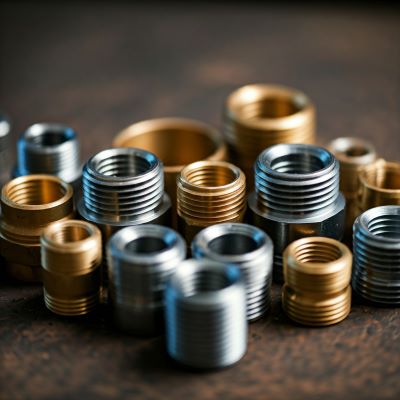Thread standards form the backbone of fastening systems, providing a common language for designers, manufacturers, and users. These standards ensure that components fit together seamlessly, preventing failures and ensuring safety.
This post will delve into the world of thread standards, exploring their key concepts, common types, and their critical role in various industries.
What Are Thread Standards?
Thread standards are sets of specifications that define the dimensions, profiles, and tolerances of threads. Threads are the helical ridges or grooves cut into the exterior or interior of a cylindrical surface, enabling components to be joined together.
Threads play a vital role in fasteners, including bolts, screws, nuts, and studs. They create a mechanical connection that can withstand various loads, from simple clamping to complex structural support. Consistent thread specifications are essential to ensure compatibility between components and prevent failures.
Common Thread Standards Used in Fastening Systems
Several major thread standards are widely used in fastening systems:
➡️ ISO Metric Threads (International Organization for Standardization): This is the most common metric thread standard, used worldwide. It is characterized by its metric units of measurement (millimeters) and its tapered thread profile.
➡️ Unified Thread Standard (UTS): Primarily used in the United States and Canada, UTS is an inch-based thread standard with both coarse and fine pitches.
➡️ British Standard Whitworth (BSW): This is a traditional inch-based thread standard used in the United Kingdom and other Commonwealth countries. It features a distinctive rounded crest and root profile.
➡️ National Pipe Thread (NPT): Designed for pipe fittings, NPT is a tapered thread standard that provides a seal between threaded pipe ends.
These standards are applied across various industries, including automotive, aerospace, plumbing, construction, and manufacturing. The specific thread standard used depends on factors such as the application, material compatibility, and load requirements.
Key Differences Between Major Thread Standards
Understanding the key differences between major thread standards is crucial for selecting the appropriate type for specific applications.
➡️ Metric vs. Imperial Threads: Metric threads use millimeters as the unit of measurement, while imperial threads use inches. This distinction is important for compatibility and tool selection.
➡️ TPI (Threads Per Inch) vs. Thread Pitch: TPI refers to the number of threads per inch, while thread pitch is the distance between adjacent threads. A higher TPI or finer pitch generally results in a stronger connection.
➡️ Tapered vs. Straight Threads: Tapered threads have a gradual decrease in diameter from the root to the crest, often used for sealing applications. Straight threads have a uniform diameter throughout, primarily used for fastening and clamping.
How to Choose the Right Thread Standard for Your Project
Selecting the correct thread standard for a project involves considering several factors:
➡️ Application Type: The intended use of the fastening system will influence the choice of thread standard. Structural applications may require stronger threads, while fluid transfer applications may prioritize sealing capabilities.
➡️ Material Compatibility: The materials of the components being joined will determine the appropriate thread standard and pitch to ensure a secure connection.
➡️ Load-Bearing Requirements: The expected loads on the fastening system must be considered to select a thread standard that can withstand the forces involved.
➡️ Safety Standards: Adherence to industry-specific safety standards and regulations is essential when selecting thread standards, especially in critical applications such as aerospace or automotive.
Consulting engineering specifications, industry guidelines, and available tools and charts can assist in identifying the appropriate thread standard for a given project.
The Role of Thread Standards in Fastening System Reliability
Thread standards play a crucial role in ensuring the reliability and performance of fastening systems. By providing precise specifications, they enable components to fit together accurately and consistently, reducing the risk of failures.
Threads contribute to load distribution and structural integrity by providing a mechanical interface that can withstand various forces. In critical industries like aerospace and automotive, where safety is paramount, adherence to thread standards is essential to prevent catastrophic failures.
Mismatched or incorrect thread standards can lead to several issues, including:
➡️ Loose connections: Components may not fit together securely, leading to vibration, noise, and potential failure.
➡️ Stripped threads: Overtightening or mismatched threads can result in damaged threads, rendering the fastener useless.
➡️ Leaks: In fluid transfer applications, incorrect thread standards can cause leaks, leading to inefficiency and safety hazards.
Conclusion
Thread standards are the foundation of fastening systems, ensuring compatibility, safety, and reliability. By understanding the various thread standards and their key differences, designers, manufacturers, and users can make informed decisions to select the appropriate threads for their specific applications.
Adhering to thread standards is crucial for preventing failures and ensuring the long-term performance of fastening systems in industries ranging from automotive to aerospace.
Post time: Sep-13-2024


